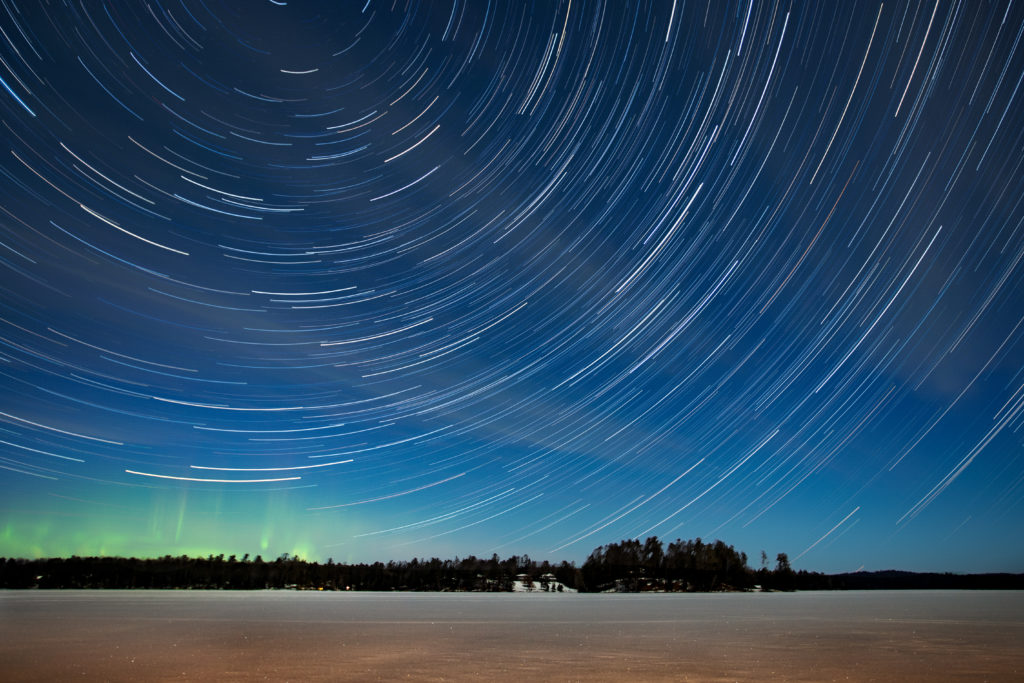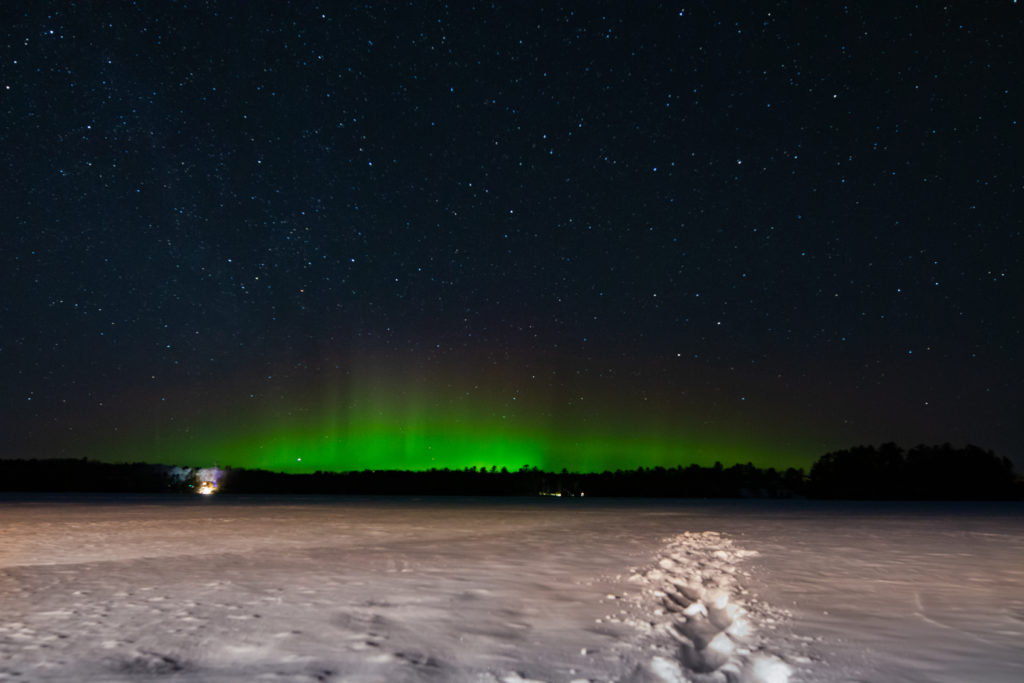My love for the night sky started when I was just a kid, as early as I can remember. I grew up on the south shore of Plum Lake in Sayner, which was the perfect spot to see the night sky. Growing up one of my favorite things to do (and my familys) was to take our boat out on the lake at night, we called it a midnight boat-ride. Once out on the lake you can see so many stars since there isn’t any light pollution near Sayner. That is where it all began. As I got older I realized that I wanted to be able to take photos of what I was seeing and share my view with others. It wasn’t until I was 18 that I got my first camera and started learning how to photograph the night sky. Being that I lived on the south shore of the lake, I was also able to look across the water and see the northern lights.
There are many different types of astrophotography. There are star trails, single exposure, and photographing objects in space like the moon or planets. My favorite is a single exposure with landscape. When I take these photos there’s a lot of planning that goes into it before I even start the exposure. For example, where is the milky way and do I want it in my shot? Or is there a light in the foreground/landscape that will mess up the photo? Once I figure out what I actually want to take the photo of and set up my camera to be looking in that direction, comes setting the focus. You’ll always want your focus (manual) to be set to or around infinity. When it comes to settings a good place to start is the lowest aperture your lens will go, for me that’s usually 2.8 since I love my Sigma 14-24mm lens for astrophotography. For exposure 15 seconds is a good place to start, and an ISO of 1000. Then I take some test pictures to make sure that the focus is right along with the settings. If the settings/focus need to be tweaked, the test pictures are the time to figure that out. Then set a timer so that there are a few seconds between when you press to take the photo and the photo is actually taken, just to make sure there isn’t any extra movement. If you’re doing a single exposure, that’s all you’ll need. If I plan on photographing the northern lights, the set-up is the same and it just comes down to tweaking those settings.
If you plan on doing star trails to a time-lapse, you’ll need to use an intervalometer. Some cameras have these built in, and other times you have to buy an external one. These devices let you take multiple shots in a row, and at certain intervals. This way your camera will take multiple photos over the course of a few hours to get the photos that you need to make star trails or a time-lapse later on in processing. Make sure you have a large SD card, the number of photos needed to create star trails and time lapses can sometimes reach into the 100GB+ range. To process these types of projects I use Lightroom, Photoshop, and sometimes StarStax.
Another piece of equipment that you don’t necessarily need, but could help, is a tracker. These devices track the stars so that you can get longer exposures without creating star trails from the movement of the Earth. This will help fainter stars and more details show up in your photos. I personally use the iOptron SkyTracker pro.
I have a few different camera set ups when it comes to taking photos of the night sky, that way I can make the most of my time by having multiple set ups each night. But by far my favorite setup is my Canon 6DMKII with a Sigma 14-24mm lens, along with the iOptron tracker. The Canon 6DMKII has a built in intervalometer so I don’t need to connect and external one. This set up is great for wide landscape-astrophotography.
Photographing the night sky takes knowledge in your equipment, post processing workflows, and astronomy. Although it also takes a love for the night sky and a want to share its beauty and mystery. Humans have always looked up to the night sky in wonder and curiosity, and thanks to modern technology we are able to share that wonder with each other.
Discover more from Vilas County Lakes & Rivers Association
Subscribe to get the latest posts sent to your email.










